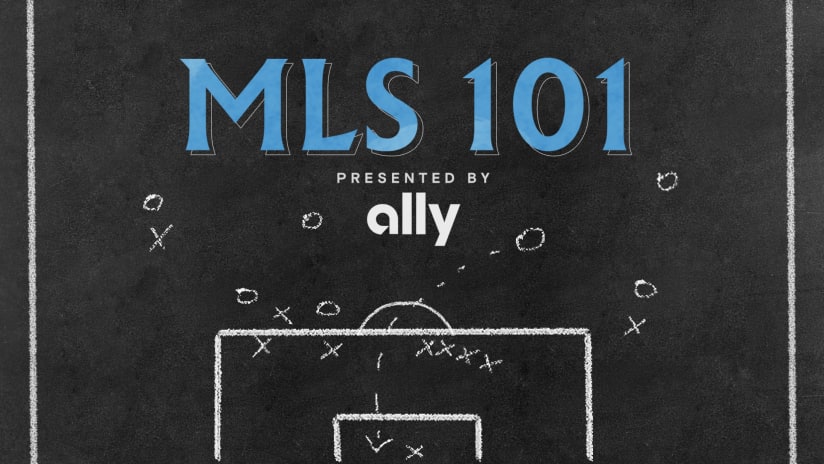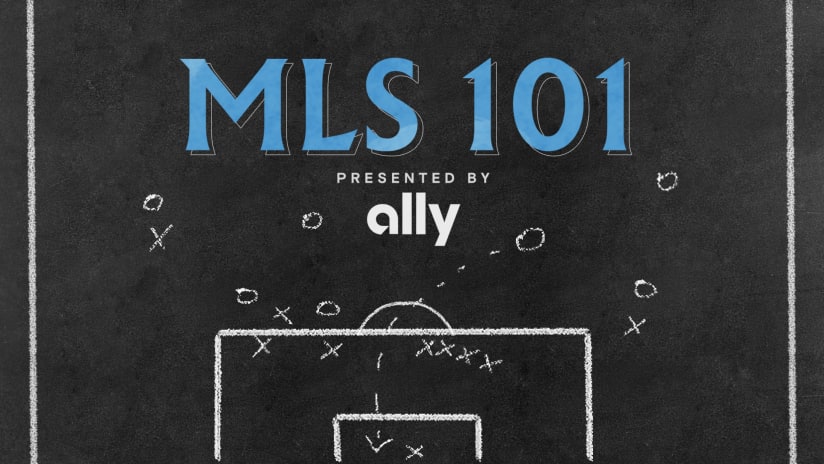What do shirt numbers in soccer tell us about a player’s position? The latest edition of MLS 101 explains the traditional numbering system in the beautiful game.
Like most team sports, soccer players wear individual squad numbers on their jerseys to help officials and fans identify them. However, certain numbers are traditionally associated with specific positions on the field.
So, if you’ve wondered why a player is described as a “No.8 who can also play as a 6,” or stumbled upon a debate about the greatest “No.10s” of all time, this explainer is for you...
When did shirt numbers originate in soccer?
Numbered jerseys have been a part of the game for over a century, and were formally introduced in 1928 in an English game between Arsenal and Sheffield Wednesday. On that day, one team wore numbers 1-11, while the other wore 12-22.
By 1939, the English football league introduced a system where both teams wore the numbers 1-11 on the field, with each number corresponding to a certain position.
Why do teams have jersey numbers 12 and above?
Traditionally, teams only played with the 1-11 jerseys, with players interchanging between shirts depending on the position they were playing in any given game (and a few additional numbers for substitutes).
In the 1990s, however, permanent squad numbers were gradually introduced—MLS used them from its inception in 1996. This saw each player in a squad keeping the same number all season, with numbers extending far beyond the traditional XI.
Even though an MLS roster has a maximum of 30 players, jersey numbers can far exceed that number.
A few squad numbers above 11 have meaning (more on that shortly), but the “first choice” players in each position are generally assigned the numbers one through 11.
There are no hard-and-fast rules about jersey numbers and positions, and it is worth noting that players are usually free to choose any number they please, all the way up to 99.
The traditional 1-11 numbering conventions, however, point to specific positions on the field…
Goalkeepers
The No.1 shirt is almost exclusively given to the first-choice ‘keeper.
Only on very rare occasions is the No.1 shirt worn by an outfield player (for example, Dutch legend Edgar Davids famously assigned himself the No.1 shirt when he was player/manager at English side Barnet, despite playing in midfield).
It varies by league, but backup goalkeepers are often, but not always, associated with the No.13.
Defenders
Jersey numbers 2-5 are traditionally reserved for defenders, based on a formation that uses four defenders at the back. The numbers are not set in stone for each position, and each team uses their numbers differently, but have typically been allocated as follows:
- No.2 is often the right-back
- No.3 is traditionally the left-back
- No.4 and No.5 typically belong to the starting center-backs
There is a grey area when it comes to the No.5 and No.6 jerseys: No.6 is often worn by a central defender too, but has also come to be recognized as the number of a defensive midfielder (the member of the midfield who performs defensive duties and “screens” in front of the defense).
Conversely, a No.5 can also be recognized as a defensive midfielder.
Midfielders
The No.7 shirt is typically worn by a winger; a player who boasts offensive talent and supports the main striker.
Cristiano Ronaldo was given the lauded No.7 shirt at Manchester United, and the number was so closely identified with his “tricky winger” playing style that he personally adopted the branding “CR7”.
The No.11 shirt is similar to the No.7 shirt, in that it typically denotes a winger. The No.7 and No.11 can sit on opposite wings.
The No.8 jersey is the reserve of central midfielders. A typical No.8 will be a box-to-box midfielder, who handles the transition from defense to attack. MLS alumni Steven Gerrard and Frank Lampard are notable modern examples of the position.
A No. 10 is almost always an attacking midfielder. Their job is to act as the team’s attacking playmaker, and to give support and service to tha main striker. The most famous example of this position in the modern game would be Lionel Messi.
Attackers
Strikers can wear the No.10 or No.11 shirts, and often will do so in a tactical system that involves two strikers (like a 4-4-2 formation).
However, in the modern game, where teams tend to play with a single out-and-out striker, those numbers are usually assigned to wingers and attacking midfielders.
The No.9 shirt is usually given to a team’s first-choice striker.
DC United’s Ola Kamara, who scored the joint-highest number of goals in MLS last season, wears No.9. Some of the most prolific center-forwards in the world, including Real Madrid’s Karim Benzema and Bayern Munich’s Robert Lewandowski, also wear the number.
So, to recap the traditional number conventions are as follows…
No.1 - Goalkeeper
No.2 - Right-back
No.3 - Left-back
No.4 - Center-back
No.5 - Center-back/central midfielder
No.6 - Center-back/central midfielder
No.7 - Winger/attacking midfielder
No.8 - Central midfielder
No.9 - Striker
No.10 - Attacking midfielder/striker
No.11 - Winger/striker
Are squad numbers above No.11 related to specific positions?
Jersey number conventions are not enforced as rules, and many “first choice” players will deliberately choose a number outside of the starting XI. (One exception is the World Cup, where the squad must wear numbers 1-23 and the No.1 shirt must be a goalkeeper.)
David Beckham famously picked No.23 with the LA Galaxy, as he was inspired by Michael Jordan. (Beckham played as a No.7 but switched to No.23 when his preferred shirt number was occupied at Real Madrid.) Bradley Wright-Phillips has chosen to wear No.99 with the New York Red Bulls and Columbus Crew, while opting for No.66 at LAFC.
Several players will also choose unconventional numbers from within the traditional 1-11. Clint Dempsey, for example, would wear No.8 for the USMNT and No.2 at the Seattle Sounders, despite playing as a striker or attacking midfielder.
There are some conventions for the higher squad numbers—as mentioned, the second-choice goalkeeper will often wear 13—but they are generally up for grabs.
Are squad numbers ever retired?
Jersey retirements are not as common in soccer as they are in other U.S. sports, but there have been some notable examples.
Napoli have not used the No.10 jersey since Diego Maradona led them to their only two Serie A league titles in 1987 and 1990. AC Milan retired the No.3 jersey in honor of defender Paolo Maldini, while Real Salt Lake retired Jason Kreis’ No.9 shirt when he returned as Head Coach and led the team to MLS Cup victory in 2009 (however, they started using his number again in 2020).












